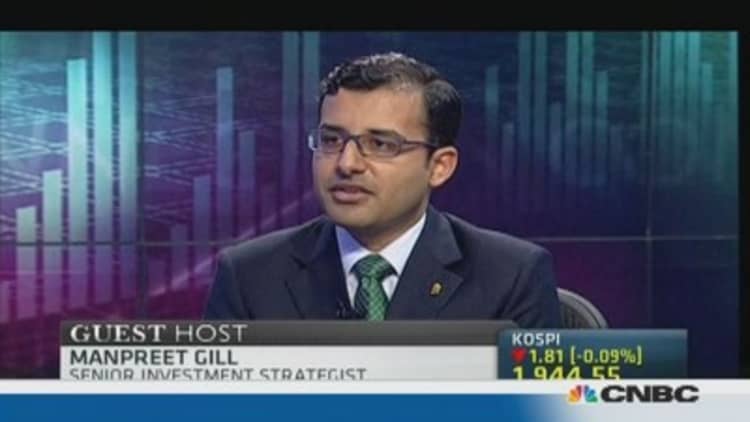Asia's major central banks, the People's Bank of China (PBoC) and Bank of Japan (BOJ), look to be headed in opposite policy directions judging by their recent moves, say strategists.
The PBoC unexpectedly drained 48 billion yuan ($7.9 billion) from money markets on Tuesday following a boom in lending at the start of the year.
"The PBoC's decision to drain liquidity using repos is a reminder that the tightening bias remains in place and the desire to curb credit growth remains intact. As such, this should be seen as a commitment to allow the on-going slow and steady slowdown of the Chinese economy to continue," Kit Juckes, head of foreign exchange research at Soicete Generale wrote in a note titled 'BOJ mini-ease, PBoC mini-squeeze.'
(Read more: China central bank drains funds after strong credit data)
The central bank withdrew the liquidity by issuing cash-draining forward bond repurchase agreements. It was the first time in eight months that forward repos were used to drain liquidity from the money market.
China's extraction of liquidity came as the BOJ decided to double the scale of two of its existing lending facilities – the Stimulating Bank Lending Facility and the Growth-Supporting Funding Facility – and extend the application periods for these facilities by one year as they were due to expire in March.
(Read more: BOJ standspat on policy, extends special loans)
The move was aimed at enhancing the transmission mechanism of quantitative easing by encouraging banks to boost lending instead of sitting on cash.
"It was just a minor tweak aimed at boosting credit demand and supply, but enough to send a message to the market that they are willing to ease further," Juckes said.
Shane Oliver, head of investment strategy and chief economist, AMP Capital Investors said the divergence in monetary policy is a reflection of the significant difference in the state of the two economies.
"China has experienced excessive credit growth for many years, and a lot of that has happened in the shadow banking sector which entails more risk," Oliver told CNBC.
For example, total social financing, a broad measure of liquidity and credit in the economy, was 2.58 trillion yuan last month – double December's level on the surge in bank loans.
(Read more: China January lending soars to 4-year high)
"The Bank of Japan faces the opposite problem, where loan growth in the private sector has been subdued. Japan is trying to encourage banks to lend more – as seen through its efforts yesterday. Whether, it will work or not remains to be seen," he said.

However, some market watchers say the central bank's recent moves should not be read into too much.
According to Marcel Thieliant, Japan economist at Capital Economics, the BOJ's decision to extend some loan facilities and double their size was largely symbolic.
"This was largely a symbolic move, as borrowing costs are already very low and there is no shortage of cheap, long-term finance," he wrote in note.
Meanwhile, David Forrester, G10 foreign exchange and fixed income strategist at Macquarie, said the PBoC's latest move is merely mopping up excess liquidity put in during the Chinese New Year period rather than tightening.
"The seven-day repo is still trading around 5 percent – which is about neutral – if the PBoC allowed it to head higher it would be consider a tightening," Forrester said.
The seven-day repo rate, which is seen as gauge of confidence to lend in the interbank market, fell as low as 3.7 percent on Wednesday after closing at 5 percent in the previous day.
—By CNBC's Ansuya Harjani. Follow her on Twitter: @Ansuya_H



